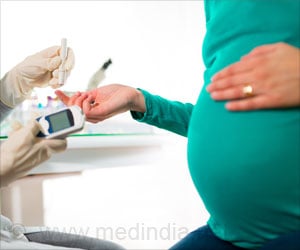After COVID-19, type 2 diabetes in children aged 10-19 surged, especially in boys with severe infections.

- Children aged 10 to 19 who had COVID-19 are at a higher risk of type 2 diabetes
- Children who are overweight, obese, or hospitalized due to COVID-19 had even greater risk of diabetes
- Children who develop type 2 diabetes after COVID-19 may experience long-term complications
SARS-CoV-2 Infection and New-Onset Type 2 Diabetes Among Pediatric Patients, 2020 to 2022
Go to source). Boys with severe COVID-19 infection were more susceptible to acquiring T2D. Before the pandemic, the number of children with T2D was already rising, largely due to factors like obesity, inactivity, and genetics.
About 210,1000 children were diagnosed with #diabetes in the United States in 2020. #COVID-19 #respiratory_infections #medindia’
Higher Risk of Type 2 Diabetes in Children After COVID-19
A recent study published in the journal JAMA Network Open compared the risk of developing T2D in children who tested positive for COVID-19 to those who had other respiratory infections during the first two years of the pandemic. Factors like body weight, illness severity, and gender were also considered as they might affect this risk.The study was carried out on the TriNetX platform, which collects data of individuals from electronic health records (EHRs) and is kept confidential. Data from over 100 million patients across more than 60 healthcare organizations in the U.S. were utilized for the study.
The main focus was on pediatric patients aged 10 to 19 who were either diagnosed with COVID-19 or other respiratory infections (ORIs) between January 1, 2020, and December 31, 2022. This age range is according to the guidelines used by the Centers for Disease Control and Prevention (CDC) on pediatric diabetes.
COVID-19 vs. Other Respiratory Infections
The COVID-19 Cohort study included patients diagnosed with COVID-19 using the specific Tenth Revision ICD-10 code (U07.1). Participants were not tested positive for COVID-19 before the study period.The ORI Cohort study included patients diagnosed with other respiratory infections using similar ICD-10 codes (J00-J22). The selected patients tested negative for COVID-19 or those who were not infected by SARS-CoV-2. Children with type 1 diabetes (T1D) or pre-existing type 2 diabetes (T2D) were excluded from the study.
Impact of Body Weight and Hospitalization on Diabetes
They compared patients who were overweight (BMI 85th to <95th percentile) or obese (≥95th percentile) based on data from the previous five years. Other factors like hospitalization due to respiratory infections and gender differences were considered to know whether they had any influence.The control group was healthy with non-infectious health conditions. They identified new cases of T2D using specific diagnostic codes and examined the cumulative risk of developing T2D at various time intervals (the same day, one month, three months, and six months after diagnosis).
Data from respiratory illness up to one month and three months after the illness were excluded as it may cause misdiagnoses due to temporary high blood sugar levels related to respiratory infection.
Children with Obesity Face Greater Risk of Diabetes After COVID-19
The study found that children who had COVID-19 were at a significantly higher risk of developing T2D compared to those with other respiratory infections with risk ratios (RR) of 1.55 for one month after infection, 1.48 for three months after infection, and 1.58 for six months after infection.For children who were overweight or obese, the risk of developing T2D after COVID-19 was even higher with an RR of 2.07 for one month after infection, 2.00 for three months after infection, and 2.27 for six months after infection.
Inpatients also showed a higher risk with an RR of 3.10 for one month after infection, 2.74 for three months after infection, and 2.62 for six months after infection.
Long-Term Diabetes Risk in Children
Though patients diagnosed with type 2 diabetes (T2D) immediately after COVID-19 infection (within the first one or three months) were excluded, researchers found that there is a higher risk of developing T2D compared to those who had other respiratory infections.The overall risk increase for developing T2D after COVID-19 was small. However, a large population of children is at risk in managing diabetes. Children who develop T2D early face a higher chance of severe complications and increased healthcare costs over their lifetime.
Reference:
- SARS-CoV-2 Infection and New-Onset Type 2 Diabetes Among Pediatric Patients, 2020 to 2022 - (https://jamanetwork.com/journals/jamanetworkopen/fullarticle/2824731)
Source-Medindia















